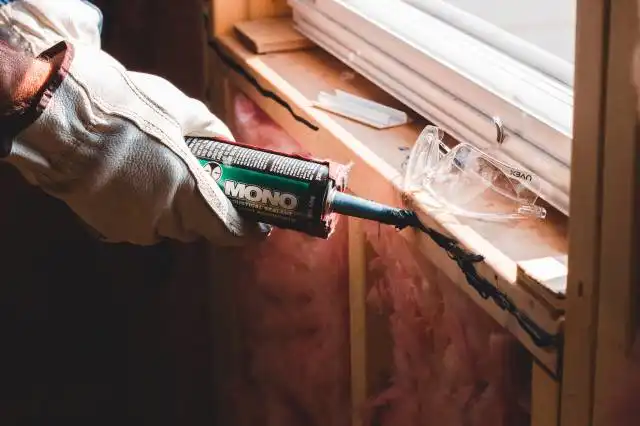Start a Sock Shop
Stepping into a Colorful Revolution: Igniting a Foot Fashion Frenzy!
| Updated


SOCK SHOP
Dabble into the fashionable world of foot couture with your very own Sock Shop! No more generic, dull socks for the world, it's time to escalate the style game starting from the ground up. This charming business revolves around selling diverse and vibrant socks, ensuring everyone's feet can make a playful statement of their own. You're not just selling socks, you're pedaling comfort, creativity, and individuality all bundled up in vibrant yarns!
Jump to Business Plan
RELATED BUSINESS IDEAS
Browse ALL Retail & Shopping Business Ideas
Discover Your Perfect Domain
Unlock the door to your online success with our hand-picked selection of premium domain names. Whether you're starting a new venture or rebranding an existing one, the right domain can set the tone for your digital presence. Browse through our curated list, each with its unique potential to enhance your brand's visibility and credibility.
SOCK SHOP MINI BUSINESS PLAN
This a quick reality check to help you identify the strengths and weaknesses of your business concept before you dive in.
Expected Percent Margins:
Depending on the quality and brand of socks offered,
- Gross Margin: 60-80%
- Net Profit Margin: 10-20%
Earnings Expectations:
- Daily Earnings: $100 - $300
- Weekly Earnings: $700 - $2,100
- Monthly Earnings: $3,000 - $9,000
- Annual Earnings: $36,000 - $108,000
Actions to Hit These Numbers:
Inventory Management:
- Initial Investment: $3,000-$5,000 to stock up on various sock designs.
- Supplier Selection: Identify 2-3 suppliers offering quality material at competitive prices.
Marketing & Customer Outreach:
- Online Presence: Building a strong online presence through social media marketing.
- Community Engagement: Participate in local festivals and community events for brand awareness.
Sales & Customer Experience:
- Store Layout: Create an engaging shopping experience (e.g., thematic sections: sports, funky, formal, etc.).
- Up-Selling: Train staff in up-selling techniques (e.g., promoting multi-pack deals or matching accessories).
Cost Control:
- Rent: Choose a commercial space with a rent that doesn't exceed 10% of expected sales.
- Utility and Maintenance Costs: Around $200 - $400 per month.
Business Operational Hours:
- Shop Operational Hours: Open 6 days a week, 8 to 10 hours a day.
- Transaction Goals: Aim for 20 - 30 transactions a day at an average sale price of $10 - $15 per pair of socks.
Remember, these numbers are indicative and the actual figures can deviate based on various factors like location, inflation, competition, and more. It's always a good idea to hire a financial advisor for more customized advice.
NOT WHAT YOU HAD IN MIND? Here are more ideas



Browse ALL Retail & Shopping Business Ideas
Grab Your Business Website Name
Before you get caught up in the whirlwind of setting up your business, invest in a domain name. It's a small but significant step that lays the foundation for your brand and makes it easier for customers to find and trust you. Just like you wouldn't build a house without securing the land first, don't build a business without securing your domain name.
"Why? Can't that wait?" Here's why it shouldn't
Step One: Determine if a Sock Shop is Right for You
Breakdown of Startup Expenses
Before starting a sock shop, it is important to understand the startup costs associated with the business. This includes the cost of the physical space, the cost of stocking the store with inventory, the cost of any necessary equipment, and the cost of any advertising or marketing. Additionally, the cost of any permits or licenses needed to operate the business should be taken into account. It is important to have a comprehensive understanding of the startup costs associated with the business before taking the plunge.
Breakdown of Ongoing Expenses
In addition to the startup costs, it is important to understand the ongoing expenses associated with running a sock shop. This includes the cost of rent, utilities, and payroll. Additionally, the cost of any necessary supplies, such as packaging materials, should be taken into account. It is important to have a comprehensive understanding of the ongoing expenses associated with the business before taking the plunge.
Examples of Ways to Make Money
There are a variety of ways to make money with a sock shop. One way is to sell socks directly to customers in the store. Another way is to sell socks online through an ecommerce platform. Additionally, the shop can offer custom sock designs or partner with other businesses to offer a variety of socks. Finally, the shop can offer promotional discounts or loyalty programs to encourage customers to purchase more socks. Understanding the different ways to make money with a sock shop is essential for success.
Step Two: Name the Business
When it comes to naming a business, it is important to choose a name that is memorable, easy to spell and pronounce, and conveys the right message. It is also important to make sure that the name is not already in use by another business. To get started, brainstorm a list of potential names that reflect the mission and purpose of the business. Consider using words that evoke a feeling or emotion, or that are related to the product or service being offered. Additionally, consider using a combination of words to create a unique name. It is also important to research the name to make sure it is not already in use. This can be done by searching online for the name and checking with the local government to make sure it is not already registered. Finally, consider registering the business name with the local government to ensure that it is legally protected.
Step Three: Create a Business Plan
Creating a business plan is an important step in starting a sock shop. It helps to provide a roadmap for the business and serves as a reference point for the business owner. A business plan should include a description of the business, a market analysis, a competitive analysis, a financial plan, and a marketing plan.
Description of the Business
The business plan should include a detailed description of the business. This should include information about the type of business, the products and services offered, the target market, and the competitive advantages of the business. It should also include a mission statement and a description of the company’s goals and objectives.
Market Analysis
The market analysis should include an analysis of the current market for socks, the potential for growth in the market, and the potential for the business to capture a portion of the market. It should also include an analysis of the competition, including their strengths and weaknesses.
Competitive Analysis
The competitive analysis should include an analysis of the competition in the market. This should include an analysis of the pricing strategies of the competitors, the marketing strategies of the competitors, and the competitive advantages of the business.
Financial Plan
The financial plan should include a detailed breakdown of the startup costs, the ongoing costs, and the expected revenues. It should also include a cash flow statement and a break-even analysis.
Marketing Plan
The marketing plan should include a detailed plan for how the business will market its products and services. This should include an analysis of the target market, the marketing channels to be used, and the budget for marketing activities. It should also include a plan for tracking and measuring the success of the marketing efforts.
Step Four: Obtain Licenses and Permits
In order to legally operate a sock shop, entrepreneurs must obtain the necessary licenses and permits. Depending on the location, the type of business, and the services offered, the required licenses and permits can vary. Generally, a business license and a seller’s permit are required. Depending on the location, a zoning permit may also be necessary. Additionally, if the business is selling food items, a food license may be required.
Research Local Requirements
Before applying for any licenses or permits, it is important to research the local requirements. This can be done by visiting the local government website or by calling the local government office. This will help entrepreneurs understand what licenses and permits are required and what fees are associated with them. Additionally, it is important to understand the timeline for obtaining the licenses and permits.
Apply for Licenses and Permits
Once the entrepreneur has researched the local requirements, they can apply for the necessary licenses and permits. This can be done online or in person. Depending on the location, the application process may require additional documents such as a business plan, proof of insurance, and proof of identity. Additionally, entrepreneurs may need to provide information about the business, such as the type of business, the services offered, and the number of employees.
Maintain Licenses and Permits
Once the licenses and permits have been obtained, it is important to maintain them. This includes renewing the licenses and permits when necessary and keeping up with any changes in local regulations. Additionally, entrepreneurs should keep records of all licenses and permits, as well as any fees paid, in case they need to be referenced in the future.
Step Five: Find a Location
When choosing a location for a sock shop, it is important to consider the foot traffic in the area, the visibility of the store, and the cost of the rent. It is also important to consider the competition in the area and the zoning regulations that may be in place.
Online Presence
In addition to a physical location, it is important to have an online presence. This can be done by creating a website, setting up a social media presence, and utilizing other online marketing strategies. It is important to have a website that is easy to navigate and that showcases the products the shop has to offer. Additionally, it is important to create a social media presence to connect with customers and to keep them updated on new products and events.
Store Layout
Once a location has been chosen, it is important to consider the store layout. This includes deciding where to display the socks, how to arrange the displays, and how to create a welcoming atmosphere. It is also important to consider the flow of the store and how customers will move through it. Additionally, it is important to consider the lighting and the colors used in the store to create a pleasant atmosphere.
Security
Finally, it is important to consider the security of the store. This includes installing security cameras, alarm systems, and other security measures. Additionally, it is important to consider the safety of the employees and customers by having proper lighting and security personnel onsite.
Step Six: Purchase Supplies and Equipment
The supplies and equipment needed to start a sock shop will vary depending on the type of shop you plan to open. If you plan to open an online store, you will need a computer, a printer, a scanner, and a web hosting service. If you plan to open a physical store, you will need a storefront, shelving, racks, hangers, and other display items. You will also need to purchase a point-of-sale system and a cash register. Additionally, you will need to purchase the socks you plan to sell.
Where to Purchase Supplies and Equipment
When purchasing supplies and equipment for your sock shop, it is important to shop around and compare prices. You can purchase items from local retailers or online retailers. If you plan to open a physical store, you may also want to consider purchasing used items to save money. Additionally, you may be able to find discounts on bulk orders.
Cost of Supplies and Equipment
The cost of supplies and equipment for a sock shop will vary depending on the size and type of shop you plan to open. For example, if you plan to open an online store, you may be able to get by with just a few hundred dollars in startup costs. On the other hand, if you plan to open a physical store, you may need to invest several thousand dollars in supplies and equipment.
Financing Options
If you need to finance your supplies and equipment, you may want to consider taking out a loan or using a credit card. Additionally, you may be able to find investors who are willing to provide financing for your business. You may also be able to get a line of credit from a bank or other financial institution.
Step Seven: Market Your Business
Now that your sock shop is up and running, it’s time to get the word out. There are a variety of ways to market your business, both online and offline. Online marketing includes social media, email campaigns, and search engine optimization. Offline marketing includes print ads, radio and television ads, and word of mouth. You can also use traditional methods such as flyers and posters.
Benefits of Marketing
Marketing is an important part of running a successful business. It helps you reach potential customers and build brand awareness. It can also help you stay top-of-mind with existing customers. Additionally, marketing can help you build relationships with customers, which can lead to repeat business.
Tips for Effective Marketing
When marketing your sock shop, it’s important to be creative and think outside the box. Try to come up with unique and interesting ways to promote your business. Additionally, make sure your messaging is consistent across all channels. Finally, focus on creating content that is valuable to your target audience. This will help you build relationships and trust with your customers.
Step Eight: Hire Employees
When starting a sock shop, it is important to consider the types of employees that will be needed to run the business. Depending on the size of the shop, the number of employees may vary. Generally, a sock shop will need employees to handle customer service, stocking, and sales.
Hiring Process
When hiring employees, it is important to consider the skills and experience of each candidate. It is also important to ensure that the candidate is a good fit for the shop’s culture. The hiring process should include a thorough interview process, background checks, and references. Additionally, it is important to ensure that the employees are properly trained and have the necessary skills to perform their job duties.
Employee Benefits
When hiring employees, it is important to consider the benefits that will be offered. Benefits can include health insurance, paid time off, and retirement plans. Additionally, it is important to consider the wages that will be offered to employees.
Employee Retention
Once employees are hired, it is important to ensure that they are retained. This can be done by providing a positive work environment, offering incentives, and providing opportunities for career growth. Additionally, it is important to ensure that employees are properly trained and have the necessary resources to perform their job duties.
Step Nine: Open the Business
Opening a business is a big step and requires a lot of preparation. It is important to make sure that all the necessary paperwork is in order and that the business is properly registered with the local government. It is also important to make sure that the business is properly insured and that all the necessary licenses are obtained. Additionally, it is important to make sure that the business has a good marketing plan in place and that the business is properly staffed. Finally, it is important to make sure that the business is properly advertised and that the business is properly promoted.
Final Considerations
Before opening the business, it is important to make sure that the business is properly funded and that the business has enough capital to sustain itself. Additionally, it is important to make sure that the business is properly staffed and that the business has the necessary resources to run smoothly. It is also important to make sure that the business is properly insured and that the business has the necessary legal protection. Finally, it is important to make sure that the business is properly marketed and that the business is properly promoted.
EXPLORE MORE CATEGORIES
Browse ALL Business Idea Categories
TAKE THE NEXT STEPS










